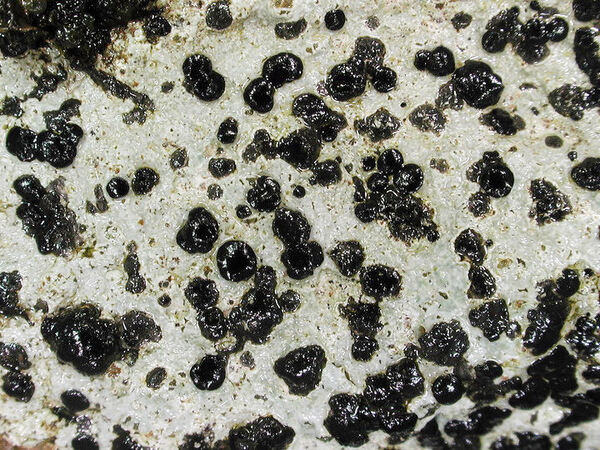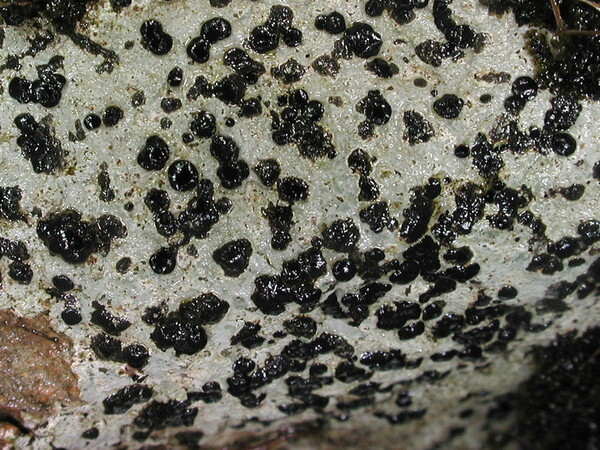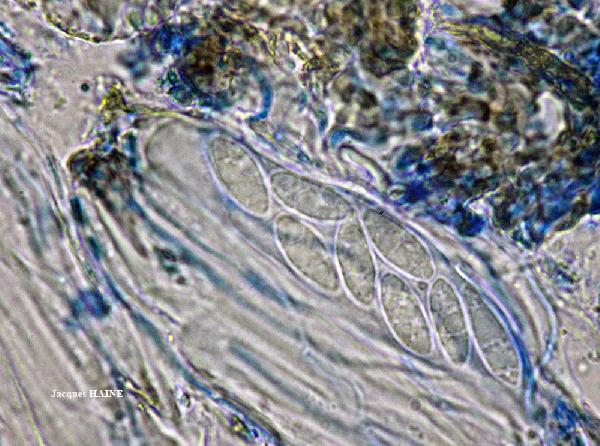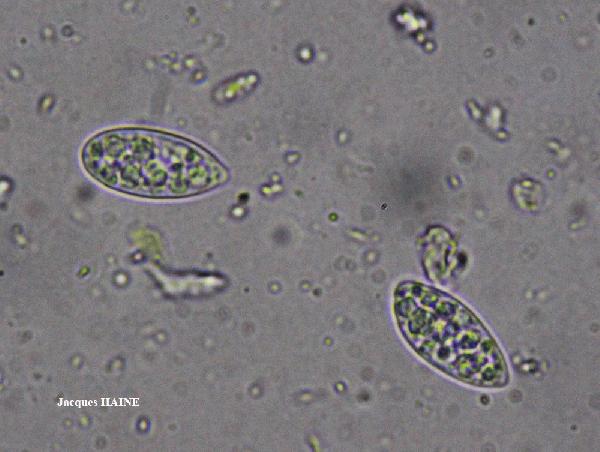Porpidia hydrophila (Fr.) Hertel & A.J. Schwab
in Hertel, Beih. Nova Hedwigia, 79: 437, 1984.. Basionym: Lecidea hydrophila Fr. - K. svenska Vetensk-Akad. Handl., ser. 3: 256, 1822.
Synonyms:
Distribution:
Description: Thallus crustose, thinly episubstratic, continuous to weakly rimose, creamy white to partially pale greyish orange, somehow shiny, sometimes poorly evident. Medulla white, I-. Apothecia lecideine, black, (0.2-)0.5-1.2(-2.5) across, usually scattered, round to irregular in outline, at first immersed but soon becoming sessile, with a slightly concave to slightly convex (mostly flat) rarely whitish-pruinose disc, and a thick, prominent, often crenulate proper margin. Proper exciple with a dark, carbonaceous cortex and a much paler, pale brown interior composed of 2-4 µm thick, filamentous hyphae; epithecium bright emerald green, 12-25 µm high; hymenium colourless or blue-green in upper part, 80-140 µm high; paraphyses coherent, richly branched and anastomosing; hypothecium dark. Asci 8-spored, elongate-clavate, with a thin, outer amyloid layer and a thickened tholus penetrated by a pore, the sides of which are strongly amyloid, Porpidia-type. Ascospores 1- celled, hyaline, ellipsoid, (14-)17-25 x 5.5-10 µm. Pycnidia usually very abundant. Conidia bacilliform, (8-)9-12 µm long. Photobiont chlorococcoid. Spot tests: cortex and medulla K-, C-, KC-, P-. Chemistry: thallus without lichen substances; epithecium with the Cinereorufa-green pigment. Note: a species of semi-inundated siliceous rocks, often found along creeks; rare throughout Europe, most frequent in Western Europe at low elevations, with a few records from the Eastern Alps (Austria). To be looked for in Italy.
Growth form: Crustose
Substrata: rocks
Photobiont: green algae other than Trentepohlia
Reproductive strategy: mainly sexual
Periodically submerged (e.g. in creeks)
Commonnes-rarity: (info)
Alpine belt: absent
Subalpine belt: absent
Oromediterranean belt: absent
Montane belt: extremely rare
Submediterranean belt: extremely rare
Padanian area: absent
Humid submediterranean belt: extremely rare
Humid mediterranean belt: absent
Dry mediterranean belt: absent

Predictive model
Herbarium samples

Bernard Bouffinier - Source: http://www.lichensmaritimes.org/index.php?task=fiche&lichen=416&lang=en
France, Huelgoat

Bernard Bouffinier - Source: http://www.lichensmaritimes.org/index.php?task=fiche&lichen=416&lang=en
France, Loquefret
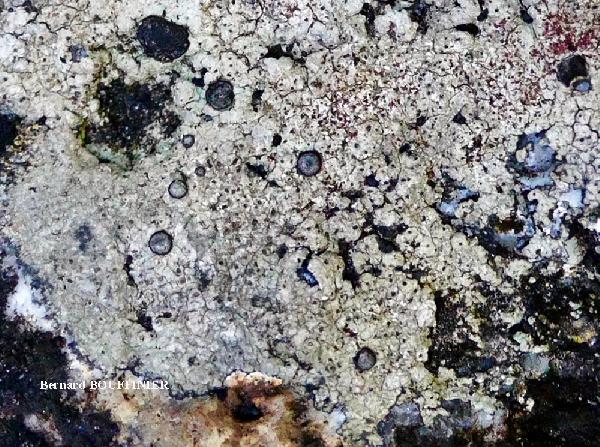
Bernard Bouffinier - Source: http://www.lichensmaritimes.org/index.php?task=fiche&lichen=416&lang=en
France, Loquefret
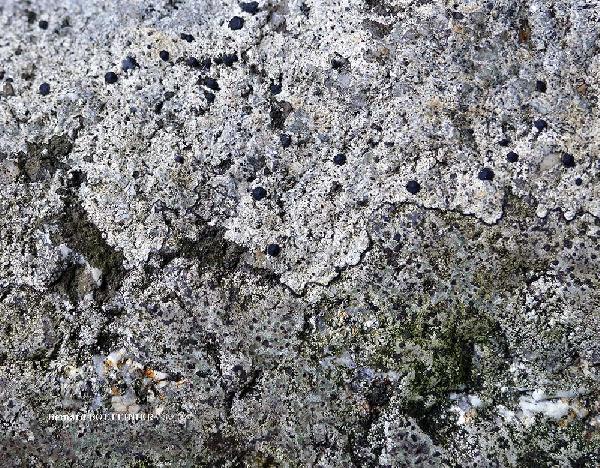
Bernard Bouffinier - Source: http://www.lichensmaritimes.org/index.php?task=fiche&lichen=416&lang=en
France, St. Herbot
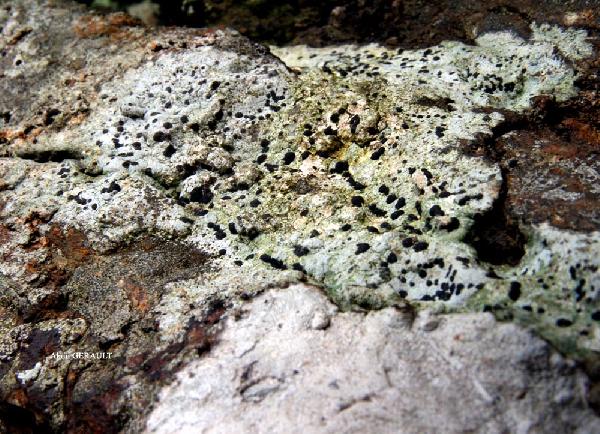
Alain Gerault - Source: http://www.lichensmaritimes.org/index.php?task=fiche&lichen=416&lang=en
France, St. Herbot
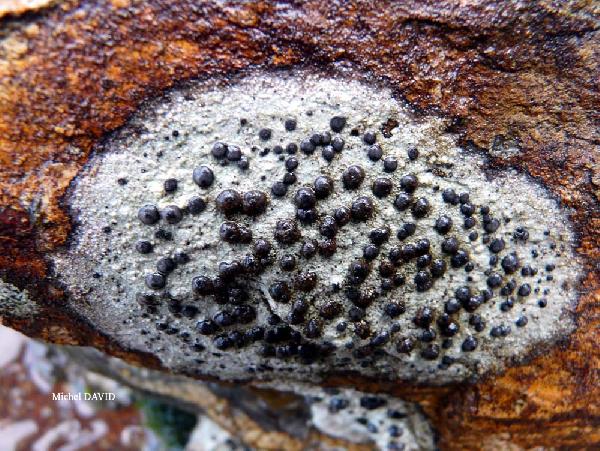
Michel David - Source: http://www.lichensmaritimes.org/index.php?task=fiche&lichen=416&lang=en
France, Fraternitè
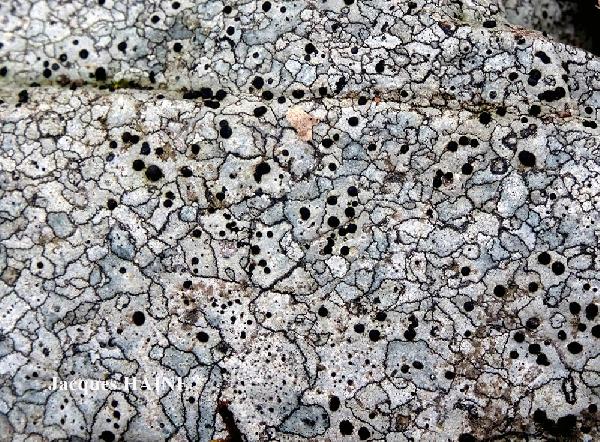
Jacques Haine - Source: http://www.lichensmaritimes.org/index.php?task=fiche&lichen=416&lang=en
Belgium, Charleroix

Jacques Haine - Source: http://www.lichensmaritimes.org/index.php?task=fiche&lichen=416&lang=en
France, Ardennes
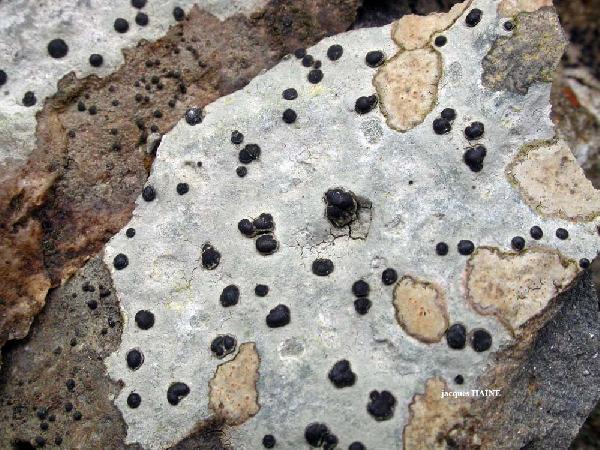
Jacques Haine - Source: http://www.lichensmaritimes.org/index.php?task=fiche&lichen=416&lang=en
France, Ardennes
Growth form: Crustose
Substrata: rocks
Photobiont: green algae other than Trentepohlia
Reproductive strategy: mainly sexual
Periodically submerged (e.g. in creeks)
Commonnes-rarity: (info)
Alpine belt: absent
Subalpine belt: absent
Oromediterranean belt: absent
Montane belt: extremely rare
Submediterranean belt: extremely rare
Padanian area: absent
Humid submediterranean belt: extremely rare
Humid mediterranean belt: absent
Dry mediterranean belt: absent

Predictive model
| Herbarium samples |

Bernard Bouffinier - Source: http://www.lichensmaritimes.org/index.php?task=fiche&lichen=416&lang=en
France, Huelgoat

Bernard Bouffinier - Source: http://www.lichensmaritimes.org/index.php?task=fiche&lichen=416&lang=en
France, Loquefret

Bernard Bouffinier - Source: http://www.lichensmaritimes.org/index.php?task=fiche&lichen=416&lang=en
France, Loquefret

Bernard Bouffinier - Source: http://www.lichensmaritimes.org/index.php?task=fiche&lichen=416&lang=en
France, St. Herbot

Alain Gerault - Source: http://www.lichensmaritimes.org/index.php?task=fiche&lichen=416&lang=en
France, St. Herbot

Michel David - Source: http://www.lichensmaritimes.org/index.php?task=fiche&lichen=416&lang=en
France, Fraternitè

Jacques Haine - Source: http://www.lichensmaritimes.org/index.php?task=fiche&lichen=416&lang=en
Belgium, Charleroix

Jacques Haine - Source: http://www.lichensmaritimes.org/index.php?task=fiche&lichen=416&lang=en
France, Ardennes

 INDEX FUNGORUM
INDEX FUNGORUM
 GBIF
GBIF
